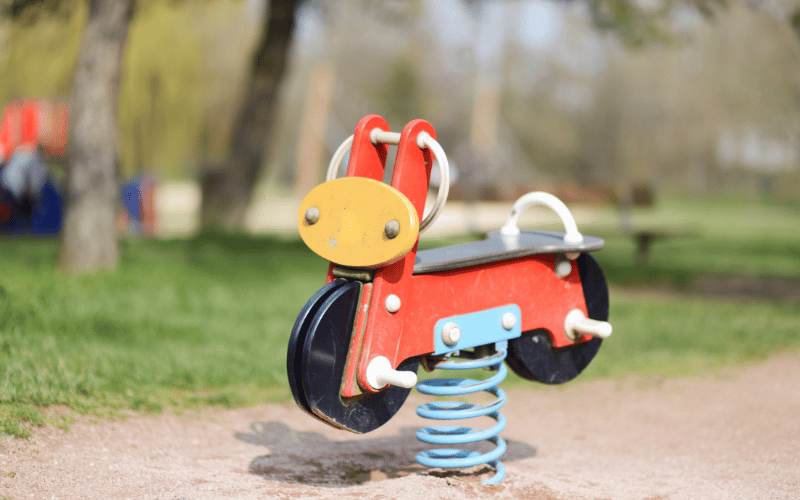Playgrounds are more than just spaces for children to burn off energy—they are vital for fostering physical, social, and cognitive development. Climbing structures, swings, and slides challenge children’s motor skills, helping them build strength, coordination, and balance. At the same time, playgrounds encourage social interaction, teaching kids how to share, take turns, and collaborate. Even imaginative play, sparked by themed equipment or creative layouts, nurtures problem-solving skills and creativity.
This guide aims to provide a comprehensive overview of the most popular types of playground equipment, their unique benefits, and the safety considerations you need to keep in mind. Whether you’re planning a new playground or upgrading an existing one, understanding the role of each piece of equipment will help you create a space that is not only fun but also safe and developmentally enriching for children. Let’s explore how to make informed choices that balance excitement with safety.
Table of Contents
TogglePopular Types of Playground Equipment and Their Benefits
1.Slides
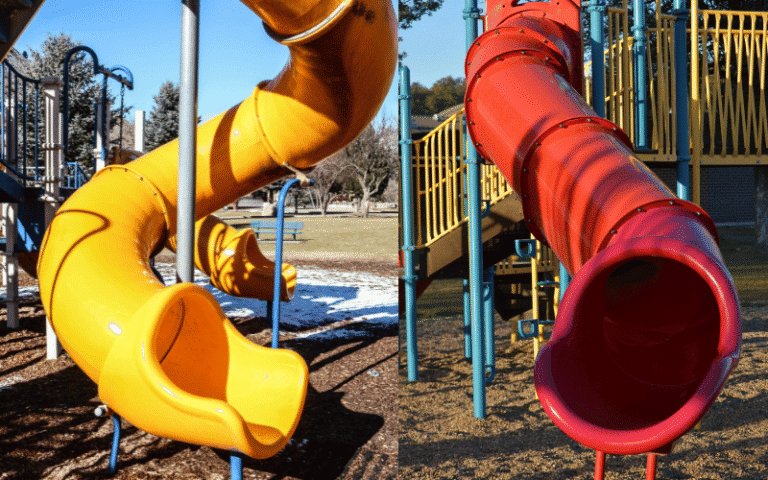
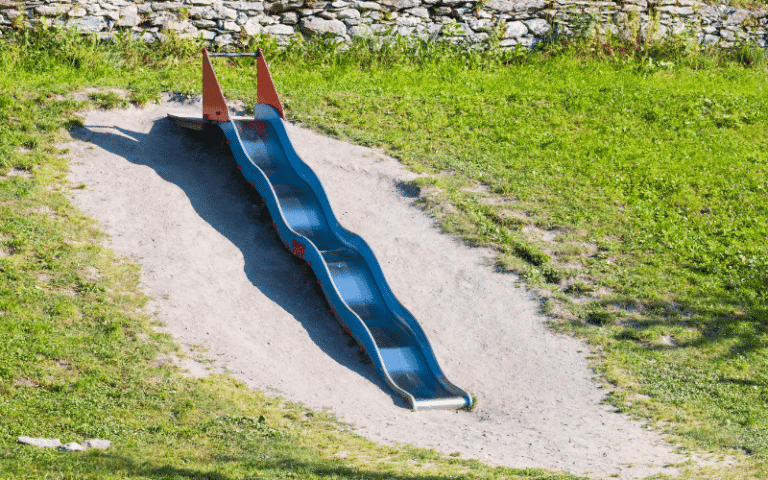
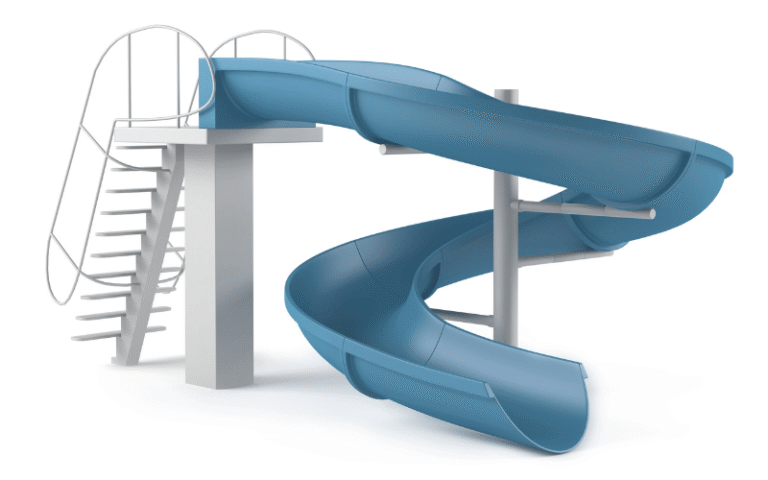
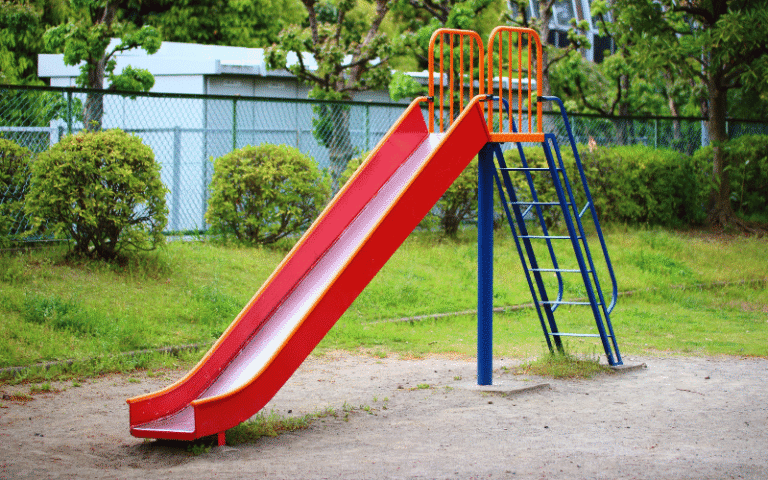
2. Climbing Structures
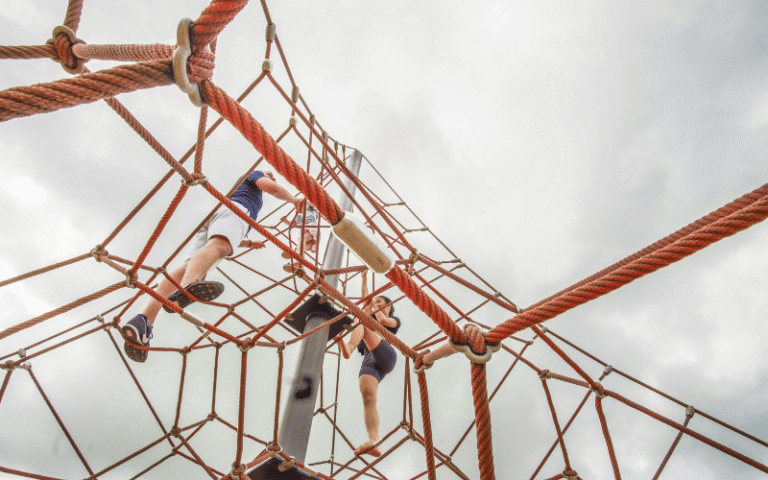
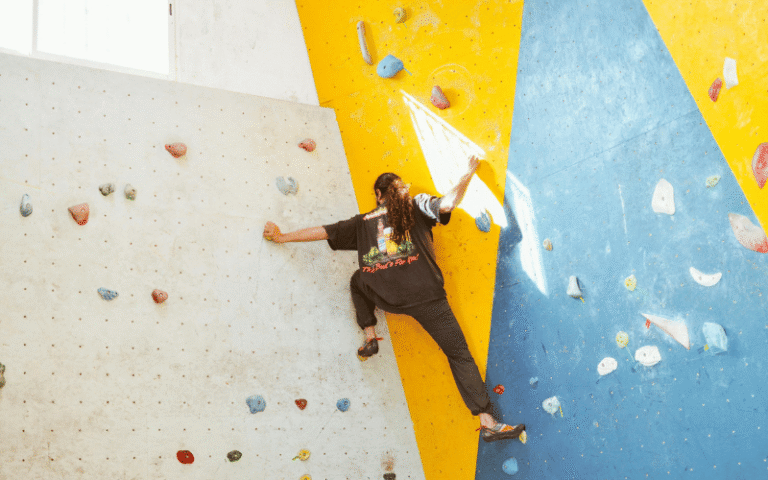
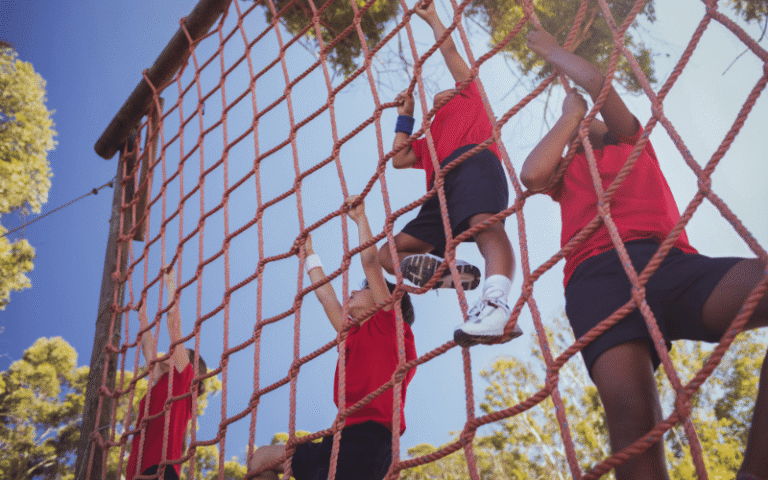
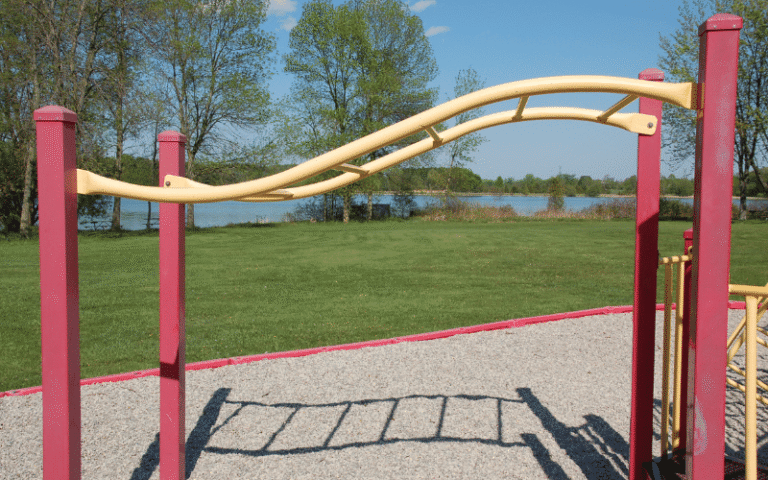
3. Swings
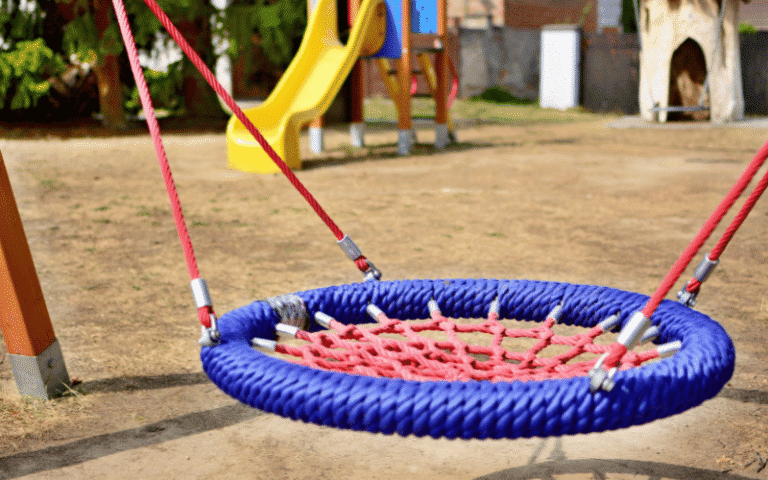
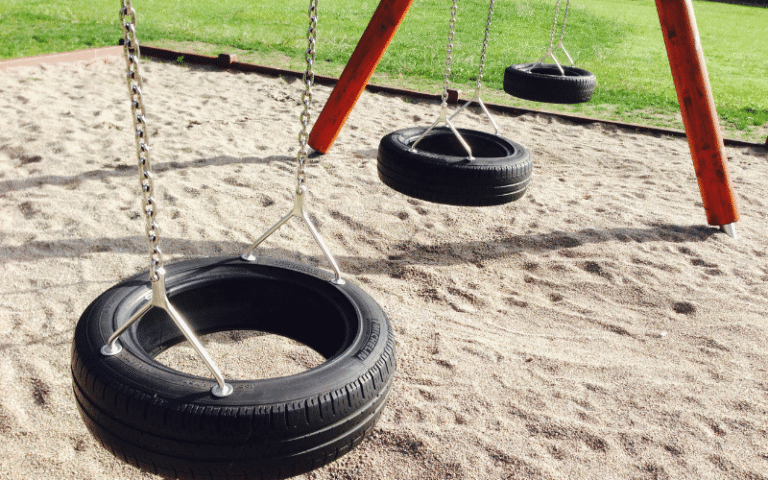
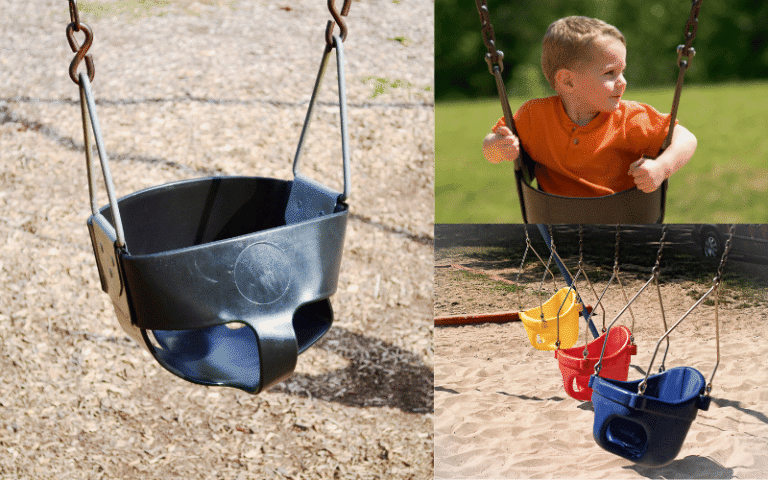
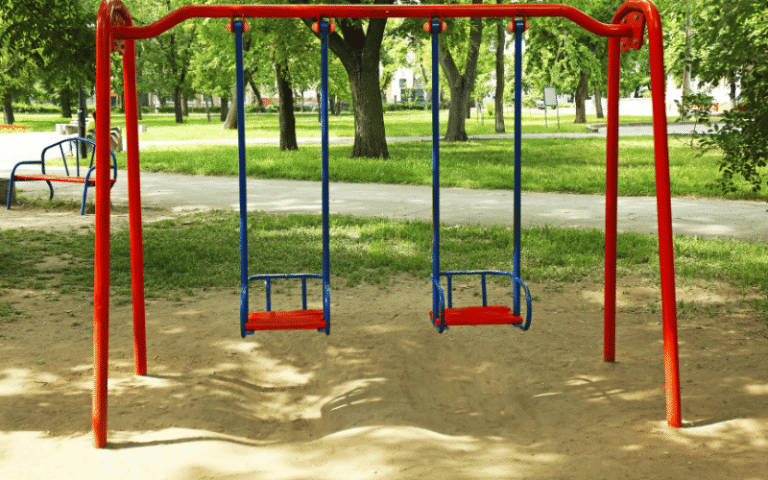
4. Seesaws
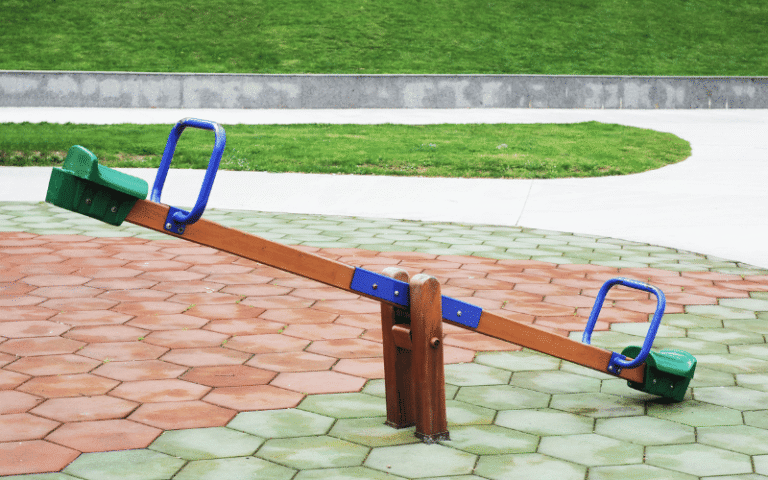
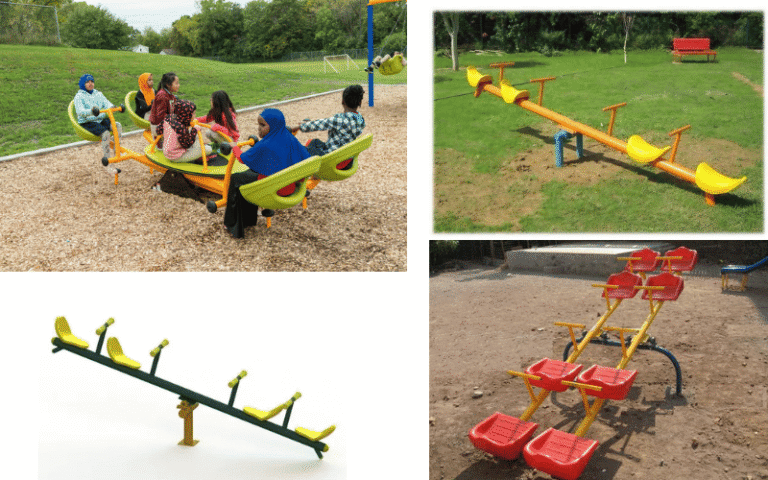
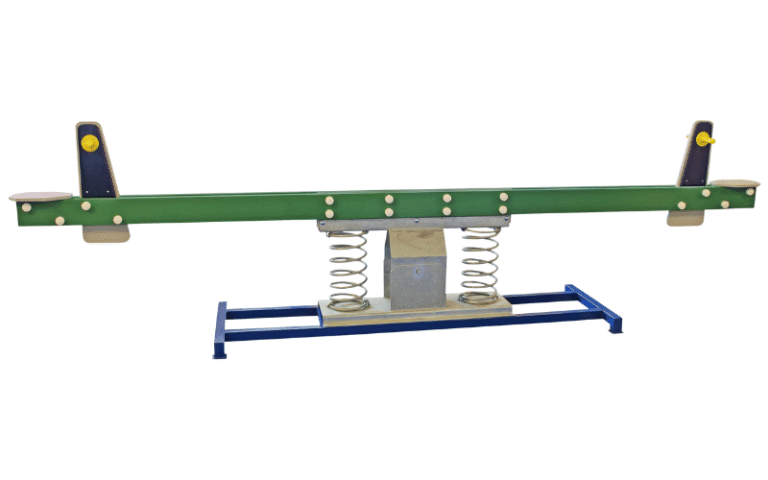
5. Rotating Equipment
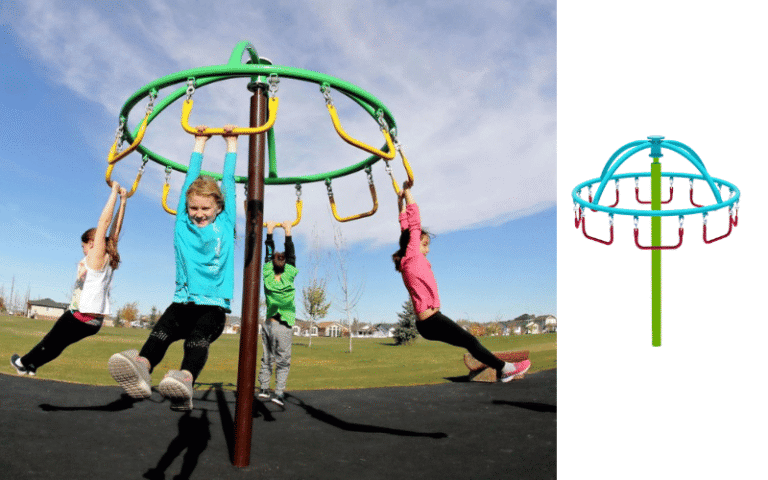
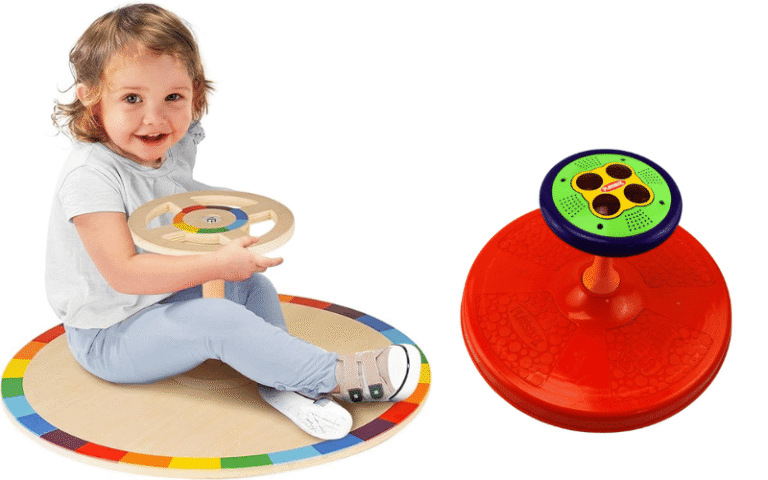
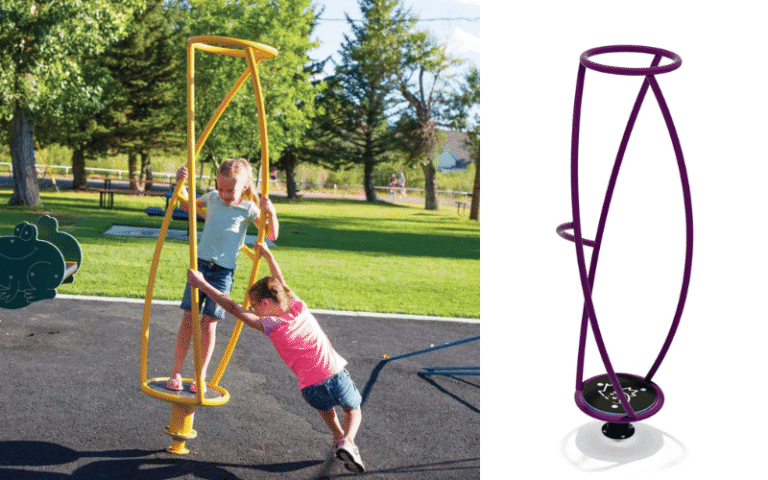
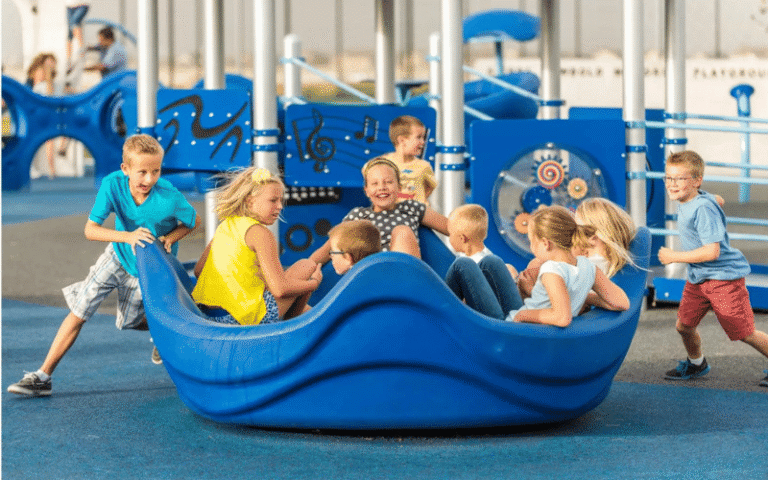
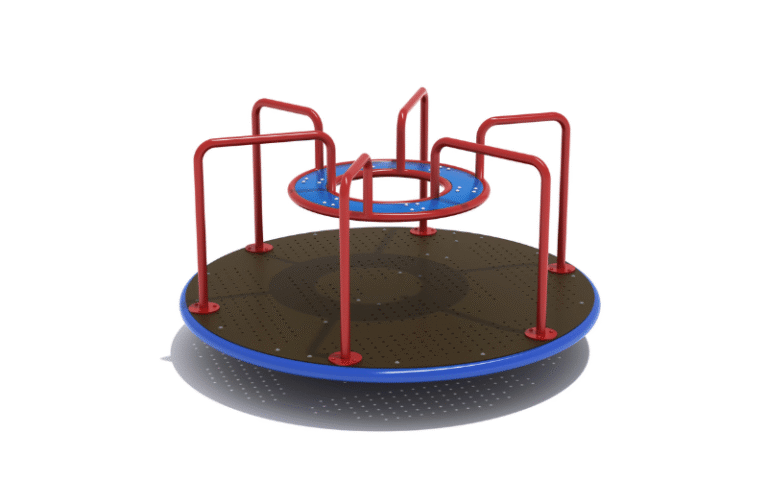
6. Interactive and Ground-Based Play
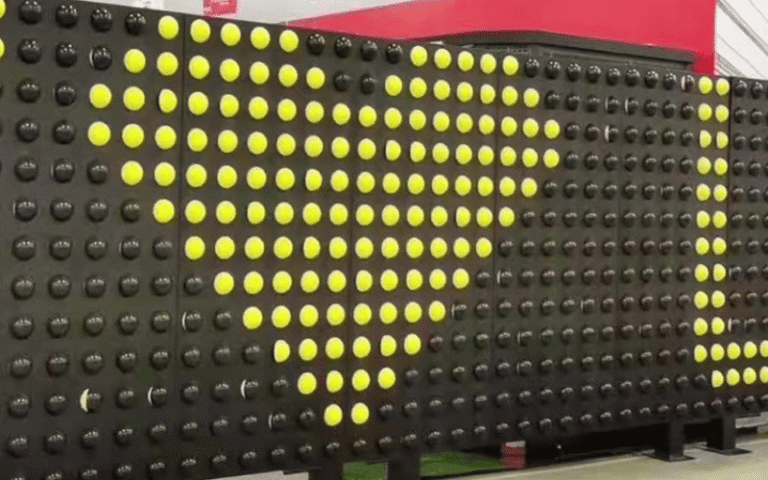
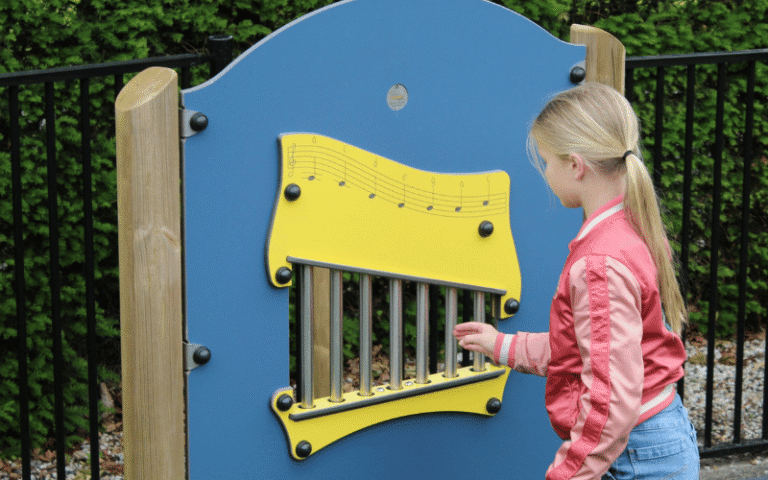
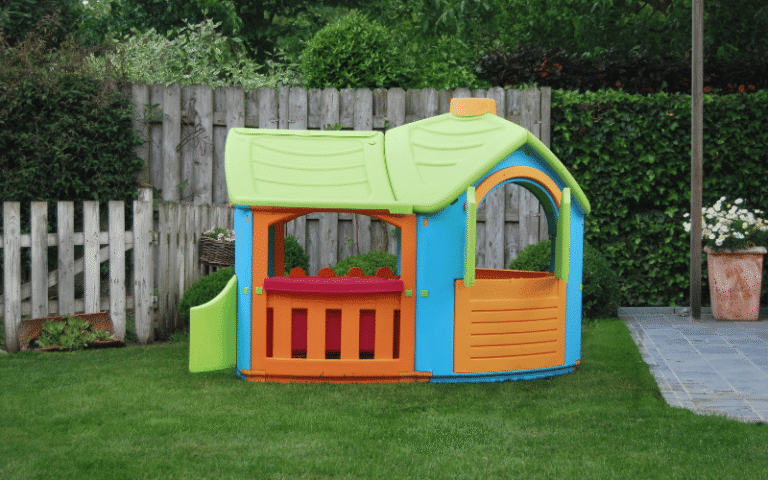
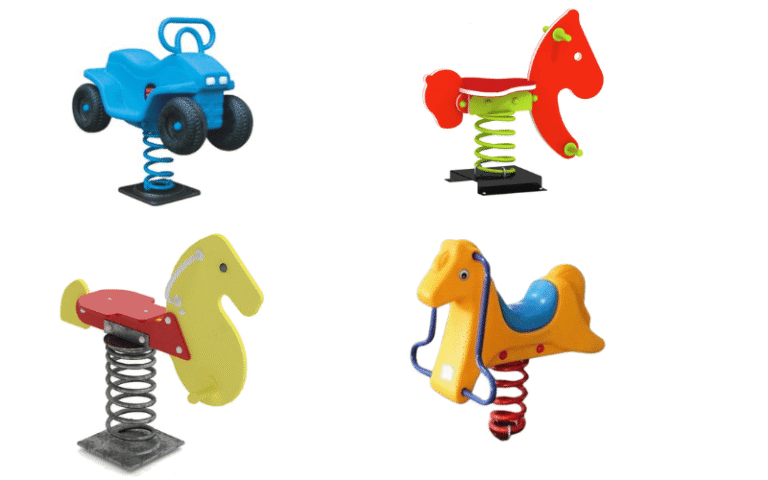
Playground equipment comes in many forms, each designed to engage children in unique ways while supporting their physical, social, and cognitive development. Understanding the types of equipment and their benefits helps you create a well-rounded play space that meets the needs of all children. Let’s dive into the most popular options and how to ensure they remain safe and enjoyable.
Slides
Slides are a playground staple, offering excitement and developmental benefits in equal measure.
- Types: Slides come in various forms, including straight slides for simplicity, spiral slides for added thrill, and tube slides for an enclosed, adventurous experience.
- Benefits: Sliding helps children develop balance and coordination as they learn to control their movements. The sensory input from sliding also supports sensory processing, while the act of waiting for a turn encourages social interaction and patience.
- Safety Tips: Always choose slides with proper side rails to prevent falls and ensure the surfaces are smooth to avoid scrapes. The run-out area at the bottom should be clear and cushioned with soft surfacing, such as rubber mulch or foam tiles, to minimize the impact of landings.
Climbing Structures
Climbing structures challenge children physically and mentally, making them a favorite for active play.
- Types: Popular options include monkey bars for upper body strength, climbing walls for problem-solving, and net climbers for agility and balance.
- Benefits: Climbing builds strength, agility, and coordination while encouraging children to think critically about their next move. Successfully navigating a climbing structure boosts confidence and teaches perseverance.
- Safety Tips: Ensure grips and handholds are secure and easy to grasp. The landing surfaces beneath climbing structures should be soft and well-maintained to cushion falls. Proper spacing between elements prevents overcrowding and reduces the risk of collisions.
Swings
Swings provide a timeless play experience that combines fun with developmental benefits.
- Types: Traditional swings are great for older children, bucket swings offer added safety for toddlers, and tire swings provide a unique group play experience.
- Benefits: Swinging enhances balance, coordination, and proprioception (awareness of body position). The rhythmic motion also provides a calming sensory experience, making swings a favorite for children who need sensory regulation.
- Safety Tips: Use sturdy chains or ropes that are securely fastened to the frame. Maintain proper spacing between swings to prevent collisions, and ensure the surfacing underneath is soft and impact-absorbing, such as rubber or engineered wood fiber.
Seesaws
Seesaws combine fun with teamwork, making them a great addition to any playground.
- Types: Classic seesaws offer a traditional experience, spring seesaws add a bouncy element, and multi-seat seesaws allow more children to play together.
- Benefits: Seesaws promote teamwork and communication as children work together to balance and move. They also strengthen core muscles and improve coordination.
- Safety Tips: Look for seesaws with pinch-point protection to prevent injuries. Shock-absorbing mechanisms, such as springs or rubber stoppers, reduce the impact of sudden movements and make the ride smoother.
Rotating Equipment
Rotating equipment adds an element of thrill while supporting vestibular system development.
- Types: Merry-go-rounds offer group play, spinners provide individual fun, and tire swings (used for rotation) combine swinging and spinning for a unique experience.
- Benefits: Rotating equipment improves balance, coordination, and the vestibular system, which helps children process motion and spatial orientation. These activities also encourage social interaction when used in groups.
- Safety Tips: Choose equipment with controlled speed mechanisms to prevent excessive spinning. Supervise children closely to ensure safe use, and check that the surrounding area is free of obstacles to avoid accidents.
By selecting a variety of playground equipment and following these safety tips, you can create a play space that is not only fun but also supports children’s growth and development in meaningful ways. Each piece of equipment brings its own unique benefits, ensuring a well-rounded and engaging experience for all.
How Playground Equipment Supports Child Development
Playground equipment is more than just a source of entertainment—it’s a powerful tool for fostering a child’s physical, social, emotional, and cognitive growth. Each piece of equipment plays a unique role in shaping a child’s development, creating opportunities for learning and growth through play. Let’s explore how playgrounds contribute to these critical areas.
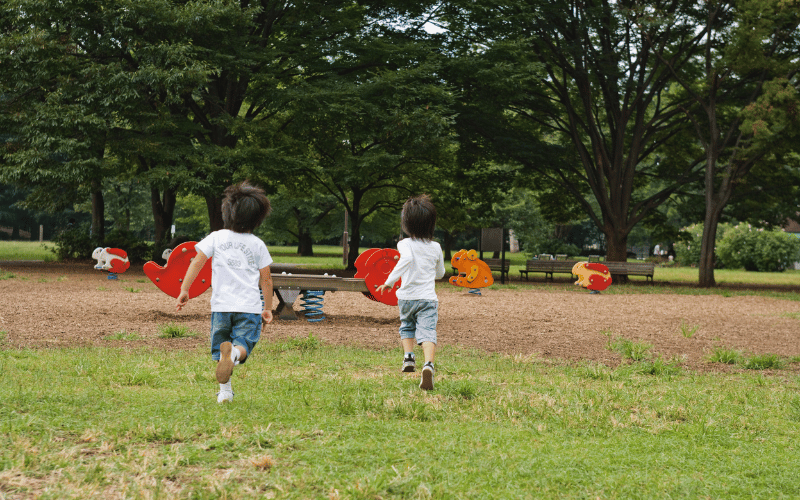
Physical Development
Playgrounds are a natural gym for children, encouraging movement and physical activity that builds their bodies and improves their health.
- Improves Motor Skills, Strength, and Coordination: Climbing structures, swings, and slides challenge children to use their muscles in new ways. For example, climbing a net requires upper body strength and coordination, while navigating monkey bars improves grip strength and balance. These activities refine both gross and fine motor skills, laying the foundation for physical competence.
- Encourages Active Play, Reducing Sedentary Behavior: In a world where screens often dominate children’s attention, playgrounds provide a much-needed outlet for active play. Running, jumping, and climbing not only burn energy but also promote cardiovascular health and overall fitness. Playgrounds inspire movement, helping children develop healthy habits that last a lifetime.
Social and Emotional Growth
Playgrounds are social hubs where children learn to interact, collaborate, and build relationships.
- Teaches Cooperation, Patience, and Conflict Resolution: Group activities like seesaws, merry-go-rounds, and multi-user climbing structures require children to work together. For instance, balancing a seesaw teaches cooperation and communication, while waiting for a turn on the slide fosters patience. These interactions help children navigate social dynamics and resolve conflicts constructively.
- Builds Self-Confidence Through Challenges and Achievements: Overcoming playground challenges, such as climbing to the top of a structure or mastering the monkey bars, gives children a sense of accomplishment. These small victories build self-confidence and encourage them to take on new challenges, both on and off the playground.
Cognitive and Sensory Benefits
Playgrounds engage children’s minds as much as their bodies, offering opportunities for problem-solving and sensory exploration.
- Enhances Problem-Solving and Spatial Awareness: Equipment like climbing walls and obstacle courses encourages children to think critically about their next move. For example, navigating a complex climbing net requires planning and spatial awareness, helping children develop cognitive skills that translate to other areas of life.
- Provides Sensory Stimulation Through Movement and Textures: Swings, spinners, and slides stimulate the vestibular system, which helps children process motion and balance. Textured panels, sensory play elements, and interactive features engage the tactile senses, providing a rich sensory experience that supports overall development.
By incorporating a variety of playground equipment, you create an environment that nurtures every aspect of a child’s growth. From building physical strength to fostering social skills and stimulating cognitive development, playgrounds are essential spaces where children learn, grow, and thrive through play.
Tips for Choosing the Right Playground Equipment
Selecting the right playground equipment requires a thoughtful approach to ensure safety, inclusivity, and long-term value. By focusing on key factors like safety, age-appropriateness, and durability, you can create a play space that meets the needs of children and the community. Let’s break it down into actionable tips.
Safety First
Safety should always take center stage when choosing playground equipment. A well-designed playground minimizes risks while maximizing fun.
- Look for Equipment That Meets Safety Standards: Always check for certifications from organizations like ASTM International or the Consumer Product Safety Commission (CPSC). These standards ensure the equipment has been tested for hazards like entrapment, sharp edges, and structural stability. For example, compliant slides will have proper side rails and smooth surfaces to prevent injuries.
- Ensure Proper Surfacing and Regular Maintenance: The surface beneath the equipment plays a critical role in injury prevention. Choose impact-absorbing materials like rubber mulch, engineered wood fiber, or poured-in-place rubber. Regularly inspect the equipment for wear and tear, such as loose bolts or cracks, and address issues promptly to maintain a safe environment.
Age-Appropriate Design
Playgrounds should cater to the developmental needs of children across different age groups while promoting inclusivity.
- Choose Equipment Suitable for Different Age Groups: Younger children benefit from low platforms, sensory panels, and bucket swings, while older kids enjoy more challenging features like climbing walls and monkey bars. Clearly separate areas for toddlers, preschoolers, and school-age children to ensure safety and appropriate play experiences.
- Include Features for Inclusive Play: Look for equipment that accommodates children of all abilities. For example, wheelchair-accessible ramps, ground-level play panels, and sensory elements like textured surfaces or interactive features create an inclusive environment where every child can participate.
Durability and Maintenance
Durable, low-maintenance equipment ensures your playground remains safe and functional for years to come.
- Opt for Materials Like Plastic or Metal That Withstand Weather and Wear: High-quality plastic resists rot, rust, and fading, while powder-coated metal offers excellent durability. For example, UV-stabilized plastic maintains its vibrant colors even after years of sun exposure, and galvanized steel resists corrosion in humid climates.
- Prioritize Easy-to-Clean and Low-Maintenance Options: Choose materials that require minimal upkeep, such as plastic that can be cleaned with soap and water. Avoid equipment with intricate designs that trap dirt or require frequent repairs. This approach reduces maintenance costs and keeps the playground looking fresh and inviting.
By focusing on safety, age-appropriate design, and durability, you can select playground equipment that provides a safe, engaging, and long-lasting play environment. Each decision you make contributes to a space where children can explore, grow, and create lasting memories.
Future Trends in Playground Equipment
The playgrounds of tomorrow are evolving to meet the needs of modern children and communities. By embracing technology, inclusivity, and sustainability, these trends are shaping play spaces that are smarter, more accessible, and environmentally responsible. Let’s explore how these innovations are transforming the industry.
Interactive Play
Technology is making its way into playgrounds, creating new opportunities for engagement and learning.
- Integration of Technology, Such as Sensory Panels and Smart Features: Interactive sensory panels with lights, sounds, and touch-responsive elements are becoming increasingly popular. For example, some panels allow children to play musical notes or solve puzzles by pressing buttons, combining play with cognitive development. Smart features, like motion-activated lights or app-connected games, add an extra layer of excitement and encourage children to explore and interact with their environment. These features not only entertain but also support sensory and cognitive growth.
Inclusive Design
Playgrounds are becoming more inclusive, ensuring that children of all abilities can play together in a supportive environment.
- Equipment That Accommodates Children of All Abilities: Inclusive playgrounds feature elements like wheelchair-accessible ramps, transfer platforms, and ground-level play areas. For instance, a merry-go-round designed with wheelchair access allows children with mobility challenges to join in the fun. Sensory play elements, such as textured panels or quiet spaces, cater to children with sensory processing needs, creating a welcoming space for everyone. Inclusive design fosters social interaction and ensures that no child feels left out.
Eco-Friendly Materials
Sustainability is a growing priority in playground construction, with a focus on reducing environmental impact.
- Use of Recycled and Sustainable Materials in Playground Construction: Many manufacturers now use recycled plastics, such as milk jugs and detergent bottles, to create durable playground components. For example, a single slide might be made from hundreds of recycled bottles, giving new life to materials that would otherwise end up in landfills. Additionally, sustainable materials like responsibly sourced wood or bamboo are being incorporated into hybrid designs. These eco-friendly choices not only reduce waste but also teach children the importance of caring for the environment.
By embracing interactive play, inclusive design, and eco-friendly materials, the future of playground equipment is brighter than ever. These trends ensure that playgrounds remain engaging, accessible, and sustainable, creating spaces where children can thrive while communities grow stronger.
Frequently Asked Questions
Q: What is the most popular playground equipment for toddlers?
A: Sensory panels, bucket swings, and low slides are among the most popular playground equipment for toddlers. Sensory panels engage their curiosity with textures, colors, and interactive elements, while bucket swings provide a secure and calming experience. Low slides with gentle slopes allow toddlers to develop balance and coordination in a safe and manageable way.
Q: How does climbing benefit a child’s development?
A: Climbing builds strength, coordination, and agility while improving problem-solving skills. It challenges children to plan their movements, enhancing spatial awareness and critical thinking. Climbing also boosts confidence as children overcome obstacles and reach new heights, teaching perseverance and resilience.
Q: Are swings safe for young children?
A: Yes, swings are safe for young children when designed appropriately. Bucket swings with high backs and secure harnesses provide the support toddlers need to swing safely. Always ensure proper spacing between swings to prevent collisions and use soft surfacing, like rubber mulch or foam tiles, underneath to cushion falls. Supervision is key to ensuring safe play.
Q: What materials are best for durable playground equipment?
A: High-quality plastic and powder-coated metal are the best materials for durable playground equipment. Plastic resists rot, rust, and fading, making it ideal for outdoor use. Powder-coated metal offers excellent strength and corrosion resistance, especially in humid or coastal environments. UV-stabilized plastic and galvanized steel ensure the equipment withstands weather and heavy use over time.
Q: How can playgrounds encourage inclusive play?
A: Playgrounds encourage inclusive play by incorporating features that accommodate children of all abilities. Wheelchair-accessible ramps, ground-level play panels, and transfer platforms ensure physical accessibility. Sensory elements, such as textured panels and interactive features, engage children with sensory processing needs. Inclusive playgrounds also provide quiet spaces for children who may need a break, creating an environment where everyone feels welcome and included.
Conclusion: Building Better Playgrounds for Kids
Playground equipment plays a crucial role in supporting children’s physical, social, and cognitive development by encouraging active play, fostering social interaction, and stimulating problem-solving skills. Take the opportunity to choose equipment that meets the unique needs of your community or school, ensuring a space where children can thrive. Consult experts or explore high-quality playground options to design engaging and safe play spaces that inspire growth and joy for years to come.




